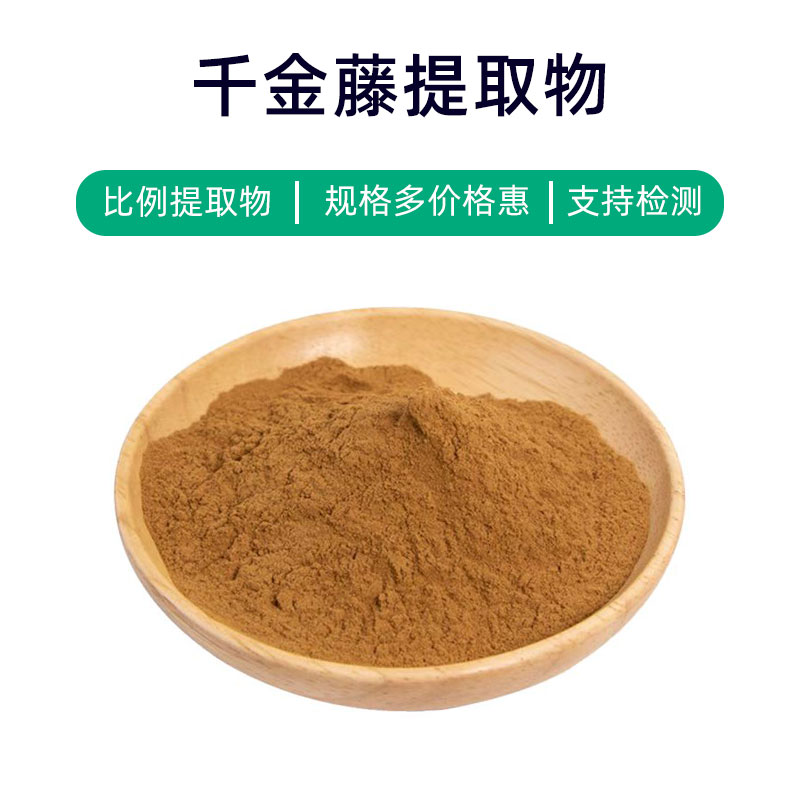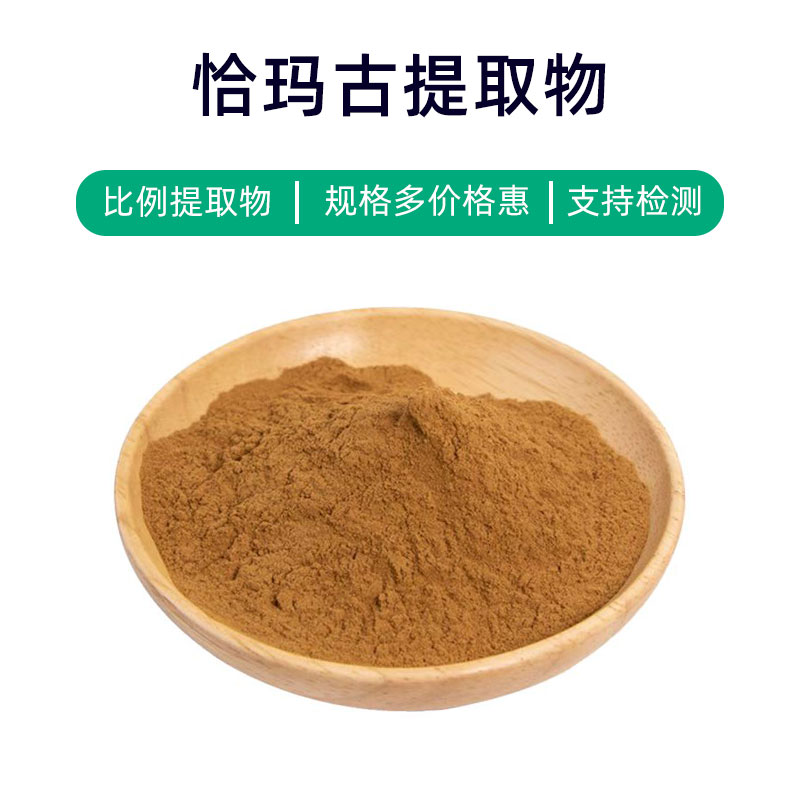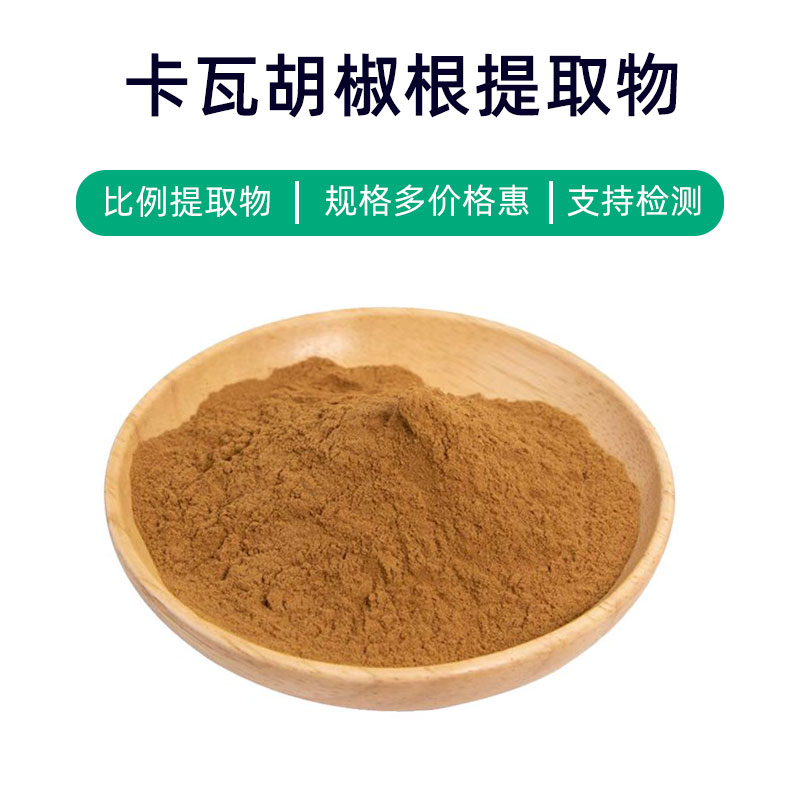Fritillaria Extract Product Introduction
Fritillaria extract is a natural plant extract obtained from the rhizomes of the fritillaria plant. Its main components include fritillaria saponins, alkaloids, etc. It is widely used in the fields of medicine, health products, and cosmetics.
In the medical field, fritillaria extract is used as a traditional Chinese medicinal material, with the effects of clearing heat and moistening the lungs, resolving phlegm and relieving cough. It is often used to treat symptoms such as coughing, expectoration, and lung heat, especially suitable for diseases such as lung - heat cough and excessive phlegm. In the health product field, fritillaria extract is often added to products such as oral liquids and capsules to improve respiratory health and relieve discomfort such as cough and tracheitis. In addition, fritillaria extract is also widely used in cosmetics as a moisturizing and anti - inflammatory ingredient for skin - care products, especially suitable for sensitive and dry skin.
In general, as a natural plant extract, fritillaria extract has important application values in the fields of medicine, health products, and cosmetics. It has good effects of clearing heat and moistening the lungs, resolving phlegm and relieving cough, providing beneficial help for people's health and beauty.
Fritillaria Extract Production Process
The production process of fritillaria extract mainly includes the following steps:
- Raw Material Preparation: First, select high - quality fritillaria plant rhizomes as raw materials, and conduct preliminary cleaning and treatment to remove impurities and soil.
- Crushing and Grinding: Crush or grind the cleaned fritillaria rhizomes into a powder to increase the extraction efficiency.
- Extraction Process: Mix the crushed fritillaria rhizomes with a suitable extractant (such as ethanol or water) and conduct extraction. The extraction process can use various methods, such as soaking extraction and heating reflux extraction, to improve the extraction rate of active ingredients.
- Concentration and Filtration: Concentrate the extract to remove most of the solvent and obtain a concentrated solution. Then, filter to remove residues and impurities to obtain pure fritillaria extract.
- Drying: Transform the extracted liquid into a powder through methods such as evaporation or spray - drying for easy storage and use.
- Finished Product Packaging: Finally, package the fritillaria extract, usually using sealed packaging to prevent the product from getting damp and deteriorating, and ensure the quality and stability of the product.
The entire production process requires strict control of the operating conditions at each stage to ensure the quality and safety of the product. At the same time, relevant production standards and specifications need to be followed to ensure that the product meets industry requirements and laws and regulations.
Fritillaria Extract: Efficacy, Uses, and Side Effects
Fritillaria extract is a common Chinese medicinal material with various functions and effects, mainly including the following aspects:
- Relieving Cough and Resolving Phlegm: Fritillaria extract contains various active ingredients, which have the effects of resolving phlegm and relieving cough. It can be used to treat respiratory diseases such as coughing and expectoration. Its active ingredients can promote the discharge of respiratory mucus, reduce cough symptoms, and relieve breathing difficulties.
- Clearing Heat and Moistening the Lungs: Fritillaria extract has the effect of clearing heat and moistening the lungs. It can be used to treat symptoms such as dry cough and yellow phlegm caused by lung heat. Its components can reduce lung inflammation, decrease the inflammatory response, help improve the respiratory environment, and promote lung recovery.
- Nourishing Yin and Moistening the Intestines: The active ingredients in fritillaria extract also have the effect of nourishing yin and moistening dryness. It can be used to treat symptoms such as dry cough and dry throat caused by lung dryness. Its components can moisten lung tissues, increase mucus secretion, protect the respiratory mucosa, and improve dry discomfort.
- Anti - inflammatory and Antibacterial: Fritillaria extract contains various components with anti - inflammatory and antibacterial effects, which can inhibit the growth and reproduction of pathogenic microorganisms, reduce the chance of bacterial and viral infections, and help prevent and treat respiratory infectious diseases.
- Regulating the Immune System: The active ingredients in fritillaria extract can also regulate immune function, enhance the body's resistance, improve the ability to resist diseases, and help prevent the occurrence of respiratory infections and other diseases.
Application Scenarios and Dosage of Fritillaria Extract
Fritillaria extract is widely used in the pharmaceutical, food, and cosmetic industries. Its main applications and recommended dosages are as follows:
1. Pharmaceutical Applications
- Cough Treatment: Fritillaria extract is commonly used in cough-relieving and expectorant medications for treating various types of cough, including colds and respiratory diseases such as bronchitis.
- Dosage: For adults, the typical oral dosage of Fritillaria extract powder is 3–6 grams per dose, taken three times a day. Dosage adjustments should be made according to medical advice.
2. Food Industry Applications
- Food Additive: Fritillaria extract can be used as a food additive for flavoring or enhancing aroma. It is commonly added to candies, chewing gum, and other food products to provide a cooling taste and fragrance.
- Dosage: The amount used should be determined based on the specific food type and intended application, following relevant industry standards and regulations.
3. Cosmetic Applications
- Oral Care: Fritillaria extract is widely used in oral care products such as toothpaste and mouthwash due to its cooling, antibacterial, and anti-inflammatory properties.
- Dosage: In cosmetics, Fritillaria extract is incorporated as part of the formulation. The exact amount is determined by manufacturers based on the product formulation, and direct use of pure extract is not recommended.
Overall, the applications of Fritillaria extract vary across different industries. It is essential to follow product instructions or medical guidance to ensure proper use and avoid excessive consumption, which may lead to adverse effects.
Source Plant, Distribution, and Growth Environment of Fritillaria Extract
Fritillaria, scientifically known as Fritillaria thunbergii Miq., belongs to the Liliaceae family and is a perennial herb widely used in traditional medicine and extract production. The following provides an overview of its botanical source, distribution, and growth environment.
Botanical Source
Fritillaria is a plant from the Fritillaria genus, mainly found in mountain areas, grasslands, and humid forest environments in China. The underground bulb is the medicinal part used for extraction. Common species include:
- Sichuan Fritillaria (Fritillaria cirrhosa D. Don)
- Pingbei Fritillaria (Fritillaria unibracteata Hsiao et K. C. Hsia)
- Zhejiang Fritillaria (Fritillaria thunbergii Miq.)
Distribution
Fritillaria is primarily distributed in southern China, including provinces such as Sichuan, Guizhou, Yunnan, Hunan, Hubei, Guangxi, Guangdong, Zhejiang, and Fujian. It thrives in mountainous and humid regions at altitudes ranging from 500 to 3,000 meters, commonly found in mountain slopes, forested areas, grasslands, and river valleys.
Growth Environment
- Climate Conditions: Fritillaria prefers humid climates and grows best in cooler regions. It is sensitive to extreme temperatures, being intolerant of both severe cold and excessive heat.
- Soil Requirements: The plant requires well-drained, acidic to neutral sandy soil that is rich in organic matter.
- Light Conditions: It thrives in semi-shaded to fully sunlit environments, often growing along forest edges, slopes, and valleys where it receives moderate sunlight.
Due to its specific habitat requirements, wild Fritillaria resources are relatively scarce. As a result, artificial cultivation and conservation efforts are crucial for sustainable development and utilization.
Processing and Storage of Fritillaria Extract
Processing Steps
The production of Fritillaria extract typically involves the following steps:
- Harvesting: Fritillaria bulbs are collected and initially cleaned.
- Preliminary Processing: The bulbs are peeled and sliced or crushed to enhance extraction efficiency.
- Extraction: Using suitable solvents (such as ethanol or water), common extraction methods include soaking, heated reflux extraction, or ultrasonic extraction.
- Purification and Concentration: The extract is filtered, concentrated, and dried to obtain the final Fritillaria extract.
- Packaging and Storage: The extract is packaged according to industry standards for further processing or direct distribution.
Storage and Preservation
Proper storage of Fritillaria extract is essential to maintain its stability and efficacy:
- Storage Conditions: Store in a cool, dry, and well-ventilated place, avoiding direct sunlight and humidity to prevent mold or degradation.
- Odor Prevention: Keep away from strong odors or volatile substances to maintain product quality and purity.
- Sealing and Labeling: After packaging, ensure proper sealing and label the product with production date, batch number, and storage instructions.
- Chemical Compatibility: Avoid contact with oxidizing agents, organic solvents, or reactive chemicals to prevent unwanted chemical reactions.
By following these storage guidelines, the shelf life and effectiveness of Fritillaria extract can be significantly extended, ensuring its safe and reliable application in various industries.
Monica Sun is a seasoned expert in the plant extraction industry with over a decade of experience in research and production. She specializes in the extraction and purification of plant active ingredients, focusing on driving innovation in natural product applications. Monica has participated in the development of multiple functional plant extracts, delivering high-value natural raw material solutions for the health food, pharmaceutical, and dietary supplement sectors.


















